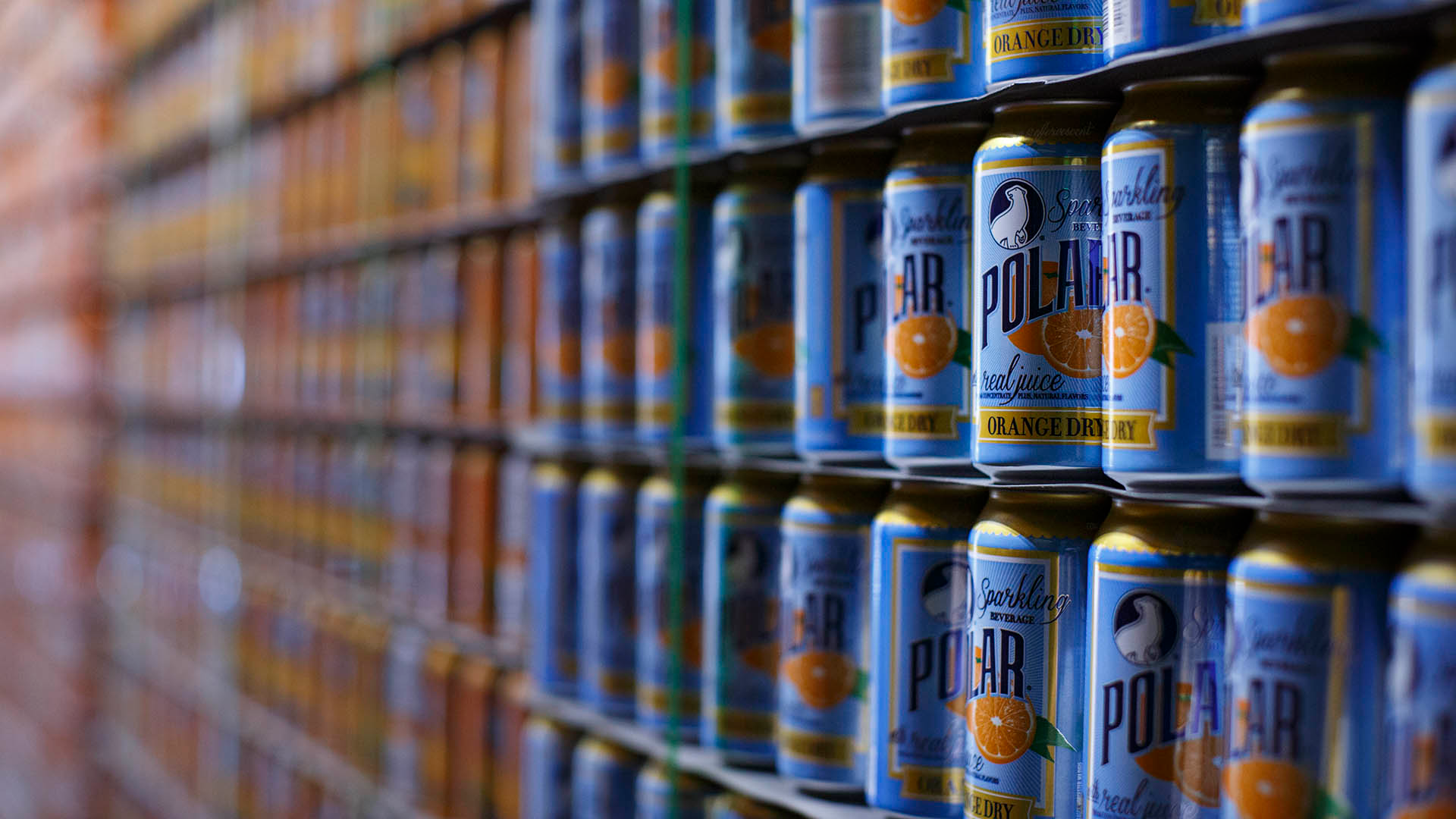Seltzer Was A Subculture—until The Bubble Burst
I first arrived in the Chicago area in 2015, just as LaCroix was beginning to crest the wave of national popularity. When I asked a friend what LaCroix was, exactly, he described it as being like water, but carbonated and available in a variety of flavors. "So it's seltzer," I told him, only to be met by a blank expression and a shrug.
I grew up in a seltzer home in Massachusetts. My parents began drinking LaCroix in the early '80s, back when it was a small local brand popular only in Wisconsin. When they moved to the East Coast, they began buying Polar seltzer in bulk from a nearby wholesale store and storing stacked cases of liter-bottle reserves in the garage. That seltzer as a concept could be more or less foreign to someone—to many, I realized, as I began regularly interrogating people on the matter—shocked me.
Just when I came to realize that the all-purpose drink of my childhood was a somewhat niche affair, it suddenly wasn't anymore: LaCroix's meteoric sales ascent in 2015 kicked off a nationwide seltzer craze. It only intensified with the explosion of hard seltzer brands onto the beverage market this summer. It's seltzer's world now, and we're just drinking it.
While its cousin, sparkling mineral water, has been bottled and circulated for more than 600 years, the production of seltzer (or "soda water") began in the late 18th century. Seltzer found popularity as the least-expensive drink at soda fountains during the Great Depression, earning it the nickname "two cents plain." While sugary soda would eventually eclipse seltzer in popularity, seltzer stuck around in some Jewish communities, who were accustomed to drinking natural mineral "seltsers" from the Taunus mountains in Germany. The word "seltzer" is of Yiddish origin; a marketing pivot to "sparkling water" proved necessary when Canada Dry began selling the stuff, since most people outside of New York didn't recognize the word.
"We're Jews from New York, so [seltzer] is just kind of a thing you always have," says Danielle Kolker, a Brooklyn native who recalls her family keeping multiple liter bottles of Vintage seltzer in the refrigerator when she was growing up. In recent years, however, Kolker's career as a musician in a traveling folk punk band has introduced her to a new group of seltzer fanatics.
"Of our friends, and fellow bands that we play with, and people who go to shows, a lot of people are in recovery, and we just have seltzer instead of beer at shows," she says. "It kind of became a thing in our music scene."

Seltzer has long been the drink of choice for many sober people who are navigating spaces in which there is alcohol—and the implicit pressure to hold a drink in your hand. The renaissance of seltzer parallels the emerging visibility of sobriety and elective sober culture, at least in the demographic highlighted by both Vox and The New York Times earlier this year. (The Times aptly paired its story with a staged photo of frat boys funneling LaCroix.) New York creatives Kate Zander and Jessica Valentine host a podcast about seeking and maintaining sobriety. Its name? Seltzer Squad.
"I think for many people, the seltzer is kind of a symbol of, I'm living a healthier and better life," says Brian Walker, a musician who says he's been a fan seltzer since childhood, and drinks it partially to replace soda and alcohol.
April Hartman, a Pennsylvania musician, is such a seltzer devotee that she got a tattoo of a seltzer can on her arm. "I grew up in Staten Island, and my family wasn't really a soda family, but we always had seltzer around," says Hartman. "I remember my mom doing Cindy Crawford workout videos in the '90s using two-liter bottles of Vintage seltzer as weights."
Online, one can find a number of seltzer-related communities for fans old and new. Seltzer Squad has its own Facebook group dedicated to support and commiseration; other groups include "I'm Not Passionate About Much, But I Feel Very Strongly About Seltzer" and "DEFEND SELTZER," a group which Kolker says grew out of the seltzer-loving music scene. Walker is an admin.
In these groups, topics range from mulling over the cost-effectiveness of SodaStreams and other at-home seltzer makers to evaluating new brands and flavors on the market. LaCroix is rarely mentioned; Wegman's, Topo Chico, and Bubly make much more frequent appearances in posts. The most frequently posted-about brand in online seltzer communities, however, appears to be Polar, a seltzer brand based out of Massachusetts which boasts limited edition seasonal flavors (this summer's delights included Raspberry Rosé and Strawberry Honeydew).
Even as the sales of LaCroix, the company whose rebrand started the seltzer boom, continue to fall, Peak Seltzer remains in full swing with no signs of slowing down. Perhaps, given enough time, we'll all be diehard seltzerheads, proudly displaying Polar can tattoos and keeping abreast of the latest flavors on the market, or stacking up cases in the garage, as my parents did. Seltzer may be here to stay as the masses' favorite fizzy drink, but for its own devoted subculture, it was always so much more.
